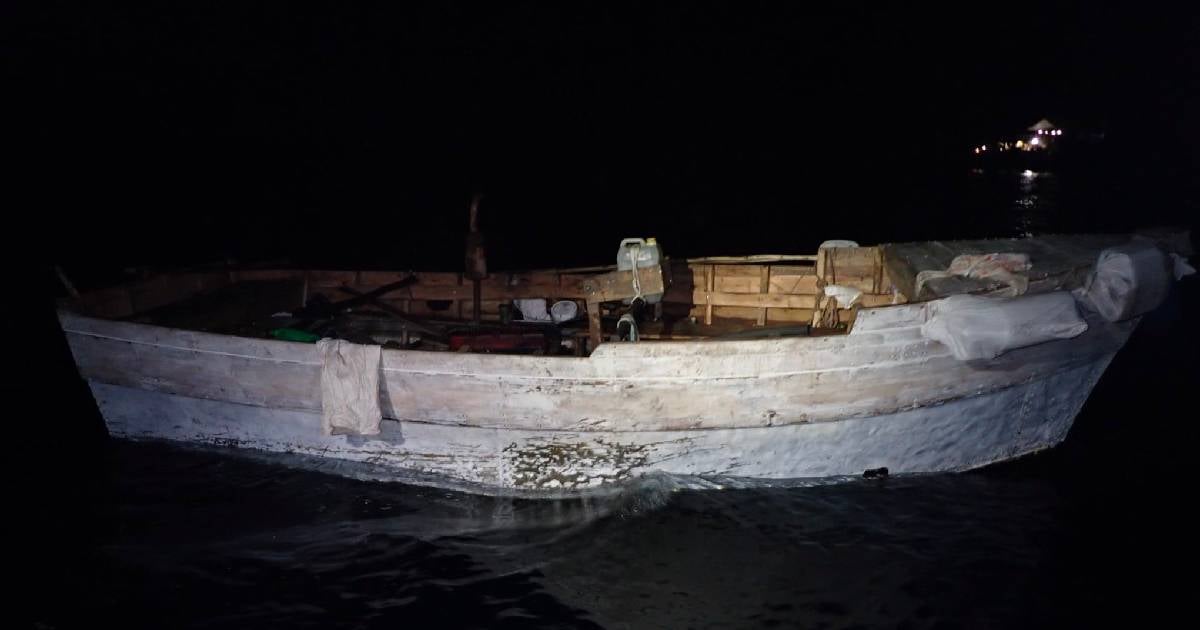The perilous sea journey from Cuba to the United States has claimed the lives of at least 142 Cuban rafters so far in 2024, according to a recent report from the Missing Migrants Project of the International Organization for Migration (IOM). These tragic figures, cited by EFE, are part of a broader picture that records a total of 291 migrants dead or missing on Caribbean maritime routes this year, representing an 18% increase compared to the 247 cases reported in all of 2023.
The trek across the Florida Straits to Miami is the deadliest of all, with the highest number of recorded victims, followed by the route from the Dominican Republic to Puerto Rico, which has claimed 91 lives. Other perilous routes include the one towards the Canary Islands, with 15 victims, and the route from Haiti to the Dominican Republic, with one fatality, the organization noted.
Edwin Viales, regional monitor for the Americas for the Missing Migrants Project, warned in a recent work session about the harsh natural and climatic conditions in these areas, as well as the forced disappearances caused by traffickers, which contribute to many vessels vanishing without a trace.
"The outlook is not encouraging. Now more than ever, coordinated international efforts in the Caribbean are necessary to save lives," Viales emphasized. He also pointed out that these routes are not used solely by Latin American and Caribbean migrants. In August of this year, the remains of 14 people from Senegal and Mauritania were found in an artisanal boat off the coast of the Dominican Republic, highlighting the transcontinental use of these dangerous routes. Similar cases have been reported in Brazil and other Caribbean countries, with a worrying increase in transcontinental shipwrecks.
The IOM has launched several initiatives to address the issue. Among them is a project by the Cuban newspaper El Toque, which collects information on the dead and missing; "La Ruta de la Vida" in the Dominican Republic, which aims to raise awareness about the risks of irregular routes; and a project by the organization HIAS to support Caribbean countries in managing migration.
The situation underscores the desperation of thousands of Cubans and other migrants who risk their lives in search of a better future, and the constant arrival of Cuban migrants on U.S. shores indicates that the migratory flow from the island shows no signs of slowing down.
Last Monday, agents from the CBP and the USCG rescued five Cuban migrants who had been adrift for seven days southeast of Port Everglades. This group, showing severe symptoms of dehydration and exhaustion, was among the 41 migrants who were repatriated to Cuba last week.
Amid this situation, the sinking of a boat in July, carrying 11 people from Pinar del Río, caused shock. Only two men survived, while the body of a 20-year-old woman, Ana Elis Gazquez Vargas, from Consolación del Sur, was found.
In July, a total of 15,645 Cubans entered the United States, according to the latest report from the Customs and Border Protection (CBP), with 4,918 of them arriving in Florida, mostly by sea.
FAQ on Cuban Migrant Crisis in 2024
Here are some frequently asked questions and answers regarding the ongoing Cuban migrant crisis in 2024.
What is the primary cause of the increase in Cuban migrant deaths in 2024?
The increase in Cuban migrant deaths in 2024 is primarily due to harsh natural and climatic conditions, as well as forced disappearances caused by traffickers.
Which route is the deadliest for Cuban migrants?
The route across the Florida Straits to Miami is the deadliest, with the highest number of recorded victims.
What initiatives has the IOM launched to address the migrant crisis?
The IOM has launched several initiatives, including a project by the Cuban newspaper El Toque, "La Ruta de la Vida" in the Dominican Republic, and a project by the organization HIAS to support Caribbean countries in managing migration.
